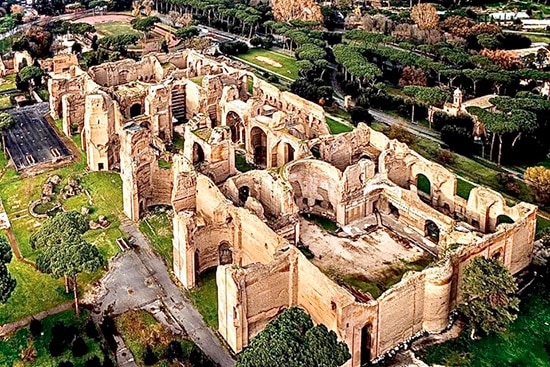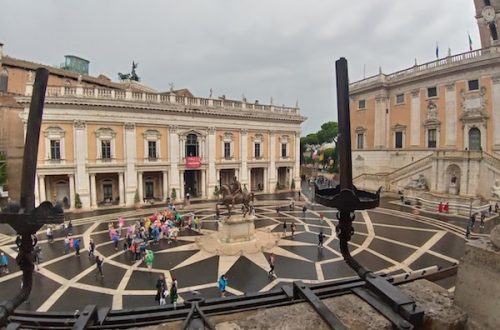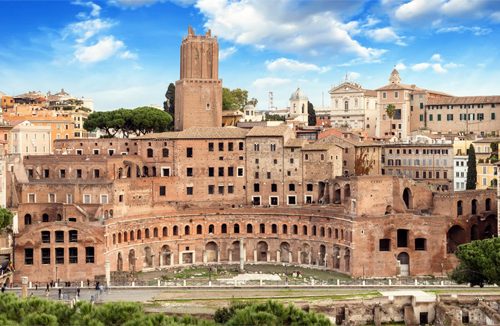
The bath of Caracalla
The Baths of Caracalla, or Thermae Antoninianae, in Rome, were one of the largest and most luxurious public baths in ancient Rome. They were built by the emperor Caracalla (officially known as Marcus Aurelius Antoninus) and completed around 216 AD. These baths could accommodate up to 1,600 bathers at once and were open to all Roman citizens, regardless of social class.
The complex covered an enormous area of approximately 25 hectares and contained a wide range of facilities, including hot and cold baths, swimming pools, gyms, gardens, libraries, and even shops and restaurants. The baths were lavishly decorated with intricate mosaics, marble statues, and frescoes, showcasing the opulence and grandeur of Roman imperial architecture.
The Baths of Caracalla remained in use for several centuries before falling into disrepair and eventually being abandoned in the 6th century AD. Despite their ruined state, the massive scale and impressive architectural remains of the baths continue to attract visitors to Rome today, offering a glimpse into the magnificence of ancient Roman public life.
While the primary function of the Baths of Caracalla was bathing and relaxation, they were also venues for various events and activities that were integral to Roman social and cultural life. Here are some notable events and activities that took place at the Baths of Caracalla:
Exercise and Training: The baths featured extensive gymnasiums equipped with weights, exercise equipment, and spaces for wrestling and other physical activities. Romans valued physical fitness, and the baths provided opportunities for exercise and training.
Sports and Competitions: The expansive outdoor areas of the baths were suitable for various sporting events and competitions, including athletics, wrestling, and ball games. These events attracted spectators and participants from across the city.
Theatrical Performances: The Baths of Caracalla had large open spaces that could accommodate theatrical performances, including plays, musical concerts, and poetry recitations. These performances were often sponsored by wealthy individuals or the imperial government as a form of public entertainment.
Public Lectures and Debates: The baths were also venues for intellectual and philosophical activities. Scholars and orators would give public lectures on topics ranging from philosophy and literature to politics and current events. Debates and discussions were also common, providing opportunities for intellectual exchange and debate.
Social Gatherings: The baths served as popular meeting places where people from all walks of life could socialize, relax, and enjoy each other’s company. Friends, family members, and acquaintances would gather to bathe, dine, and engage in conversation, making the baths important social hubs in Roman society.
Religious Ceremonies: On occasion, religious ceremonies and rituals were held at the baths, often in honor of the gods associated with health, cleanliness, and water, such as Apollo, Venus, and Neptune. These ceremonies were conducted by priests and attended by devout worshippers seeking divine favor and blessings.
Overall, the Baths of Caracalla were not just places for bathing and hygiene but also vibrant centers of social, cultural, and recreational activity in ancient Rome. They played a significant role in shaping the daily lives and experiences of Roman citizens, providing opportunities for leisure, entertainment, and community engagement.
![]()




